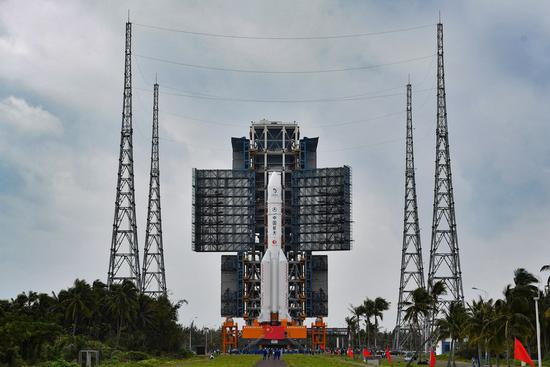
Photo taken on Nov. 17, 2020 shows the Long March-5 Y5 rocket at the Wenchang Spacecraft Launch Site in south China's Hainan Province. (Xinhua/Guo Cheng)
A Long March-5 rocket began to be filled with liquid oxygen and liquid hydrogen cryogenic propellant at about 6:30 p.m. (Beijing Time) Monday, said the China National Space Administration (CNSA).
The Long March-5 Y5 rocket, scheduled to be launched from the Wenchang Spacecraft Launch Site in south China's Hainan Province between 4:00 a.m. and 5:00 a.m. Tuesday, will send the Chang'e-5 spacecraft to Earth-moon transfer orbit.
The mission is the country's first attempt to launch a spacecraft to collect and return samples from the moon, the CNSA said.
The launch window is the best time selected through orbit design, considering the factors including the position of Earth and the moon.

